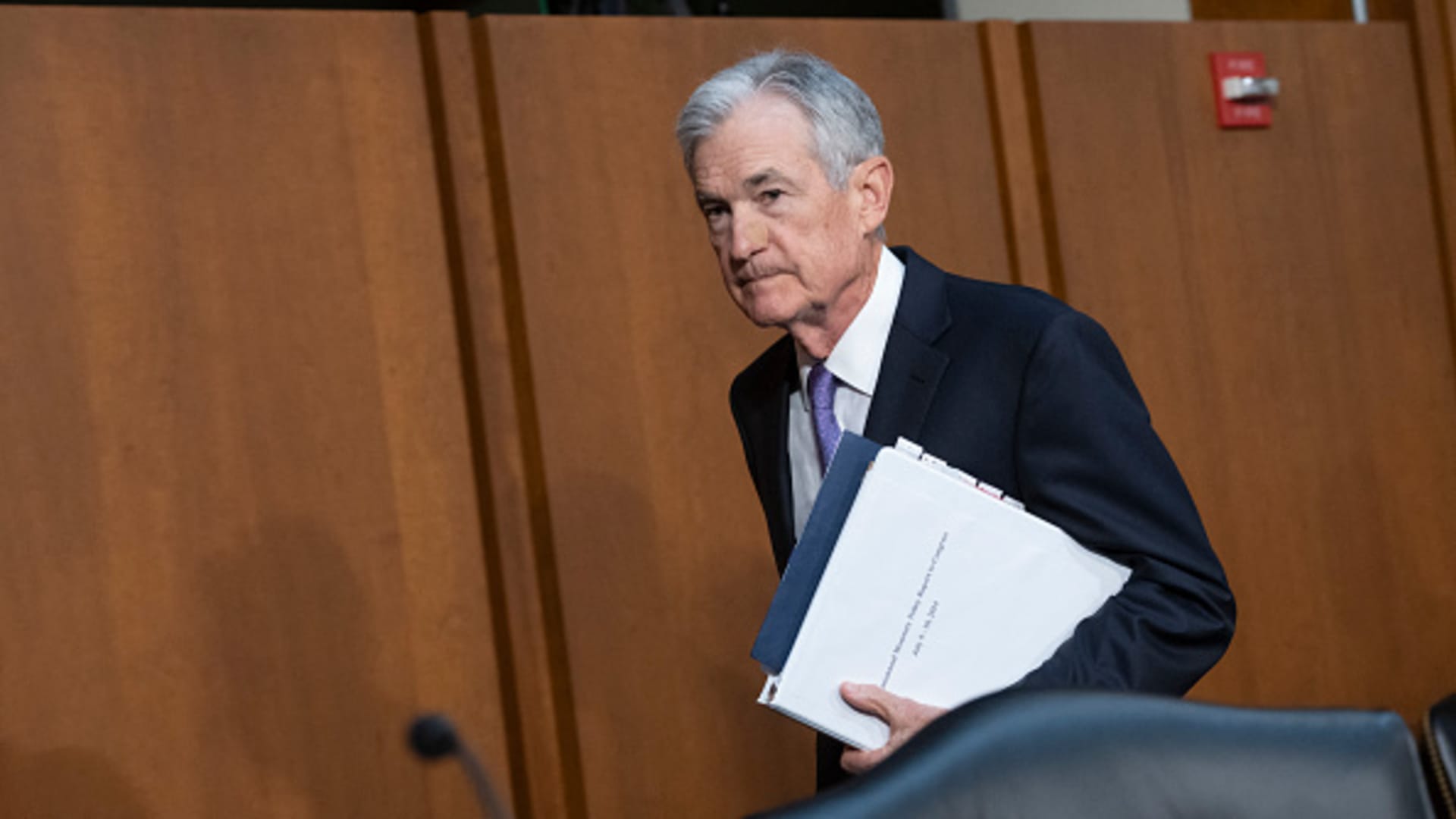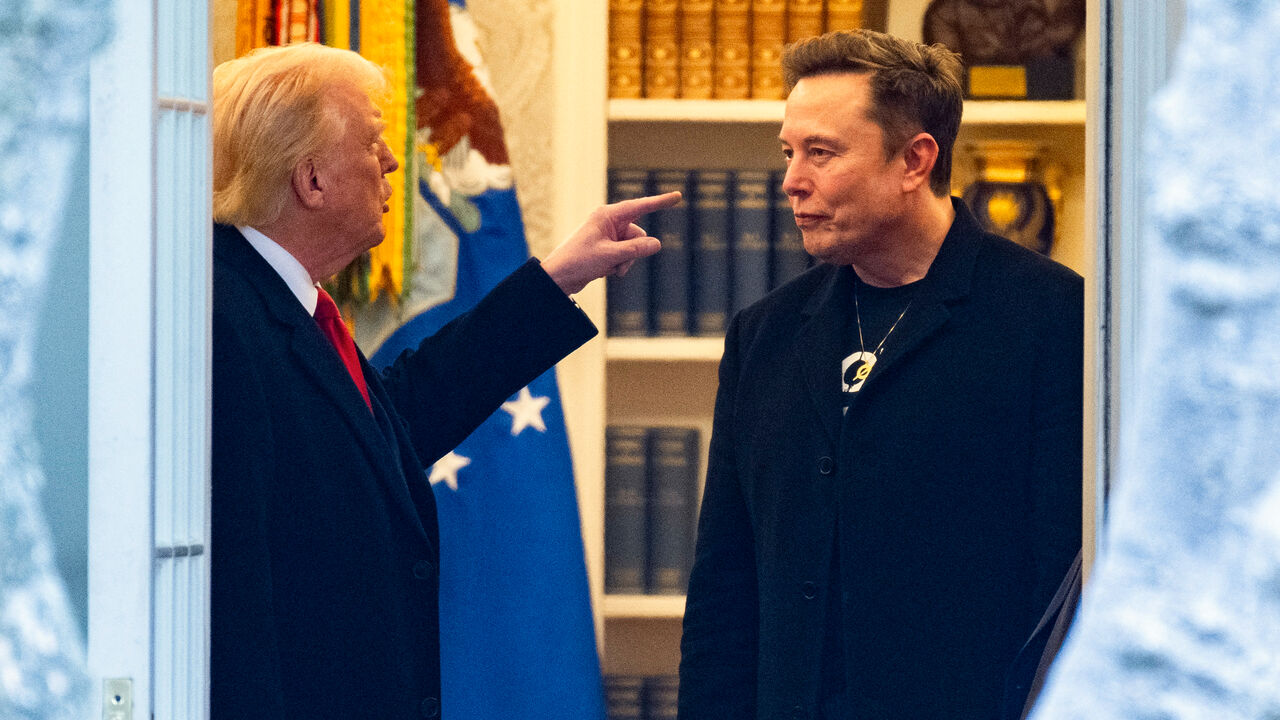US Federal Reserve Chair Jerome Powell arrives to testify before the Senate Banking, Housing, and Urban Affairs Hearings to examine the Semiannual Monetary Policy Report to Congress at Capitol Hill in Washington, DC, on July 9, 2024.
Chris Kleponis | AFP | Getty Images
Federal Reserve officials head into their policy meeting Tuesday closer to their goal of low inflation, but how much they will ease back on interest rates remains an open question.
A week’s worth of inflation data showed that price pressures have eased substantially since their meteoric rise in 2021-22. One gauge of consumer prices showed 12-month inflation at its lowest since February 2021, while wholesale price measures indicated pipeline price increases are mostly under control.
Both readings were certainly enough to clear the way for an interest rate cut at the Federal Open Market Committee meeting, which concludes Wednesday with a rate decision and an updated forecast on where central bankers see things heading in the future.
“We got two more months of good inflation data” since the last Fed meeting, Claudia Sahm, chief economist for New Century Advisors, said in a CNBC interview Friday. “That’s what the Fed asked for.”
The question, though, turns now to how aggressively the Fed should act. Financial markets, which provide a guidepost on where the central bank is heading, were no help.
Futures markets for most of the past week had lasered in on a quarter percentage point, or 25 basis point, rate cut. However, that turned on Friday, with traders switching to an almost even chance of a either a 25- or a half point, or 50-basis point-reduction, according to the CME Group’s FedWatch tool.
Sahm is among those who think the Fed should go bigger.
The inflation data “on its own would have gotten us 25 next week, as it should, and will get us a whole string of cuts after that,” she said. “The federal funds rate has been over 5%, has been there for over a year to fight inflation. That fight is won. They need to start getting out of the way.”
That means, Sahm said, starting off with a 50 basis-point reduction as a way to put a floor under potential labor market decay.
“The labor market [since] last July has gotten weaker,” she said. “So there’s an aspect of just recalibrating. We got some more information. [Fed officials] need to kind of clean it up, do a 50 basis point cut and then be ready to do more.”
Confidence about inflation
The inflation reports indicate that the battle to bring inflation back down to 2% isn’t exactly over, but things are at least moving in the right direction.
The all-items consumer price index nudged up just 0.2% in August, putting the full-year inflation rate at 2.5%. Excluding food and energy, core inflation stood at 3.2%, a good deal farther away from the Fed’s target.
However, most of the core strength has come from stubbornly high shelter costs, boosted by the Bureau of Labor Statistics’ byzantine “owners equivalent rent” measure that asks homeowners what they could get if they rented out their residence. The yardstick, which comprises about 27% of the total CPI weighting, rose 5.4% from a year ago.
Despite lingering pressures, consumer surveys indicate confidence that inflation has been subdued if not completely arrested. Respondents to a University of Michigan survey in September expected inflation to run at 2.7% over the next 12 months, the lowest reading since December 2020.
Taking all the various inflation dynamics into account, Fed Chair Jerome Powell said in late August that his “confidence has grown” that inflation is trending back to 2%.
That leaves employment. Powell said in the same speech, delivered at the Fed’s annual retreat in Jackson Hole, Wyoming, that the Fed does “not seek or welcome further cooling in labor market conditions.”
The Fed has two jobs — stable prices and a healthy job market — and the primary mission looks about to change.
“If Powell wants to deliver on his, ‘we want no further weakening, no further cooling,’ they are going to have to, like, really move here, because that cooling trend is well established,” Sahm said. “Until it is interrupted, we are going to continue to see payrolls drift down and [the] unemployment rate drift up.”
The case for a quarter
To be sure, there’s considerable sentiment for the Fed to lower by just a quarter-point at next week’s meeting, reflecting that the central bank still has more work to do on inflation, and that it is not overly worried about the labor market or a broader economic cooling.
“That’s really the key that they need to kind of hone in on, which is that they are normalizing policy and not trying to provide accommodation for an economy that is really in trouble,” said Tom Simons, U.S. economist at Jefferies. “I think they’ve done a very good job of expressing that point of view so far.”
Even with the quarter-point move, which Simons forecasts, the Fed would have plenty of room to do more later.
Indeed, market pricing anticipates rates could come down by 1.25 percentage points by the end of 2024, an indication of some sense of urgency at bringing benchmark borrowing costs down from their highest levels — currently 5.25% to 5.50% — in more than 23 years.
“The whole reason why they’ve been so cautious about cutting is because they’re concerned that inflation is going to come back,” Simons said. “Now, they have more confidence based on data that suggested [inflation] isn’t coming back right now. But they do need to be very careful to monitor potentially changing dynamics.”

 Blog Post6 days ago
Blog Post6 days ago
 Economics1 week ago
Economics1 week ago
 Accounting1 week ago
Accounting1 week ago
 Economics1 week ago
Economics1 week ago
 Personal Finance1 week ago
Personal Finance1 week ago
 Personal Finance1 week ago
Personal Finance1 week ago
 Accounting1 week ago
Accounting1 week ago
 Finance1 week ago
Finance1 week ago





















